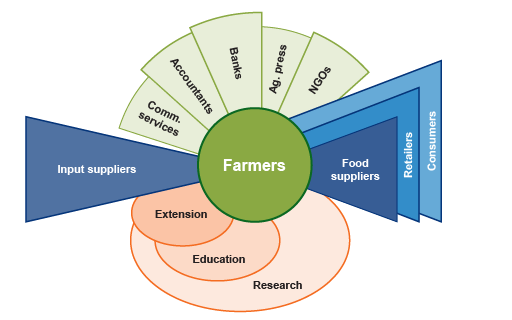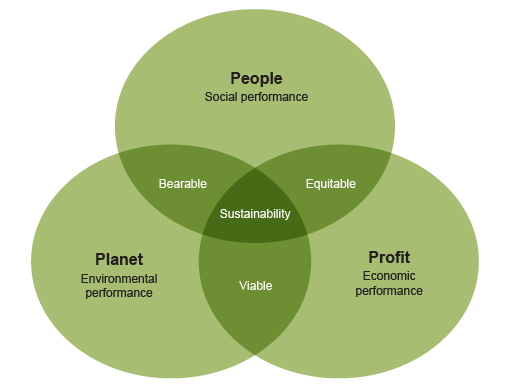Use 'Print preview' to check the number of pages and printer settings.
Print functionality varies between browsers.
Printable page generated Friday, 26 April 2024, 4:13 PM
Session 2 The nature of innovative agricultural advisory services
Session 2 The nature of innovative agricultural advisory services
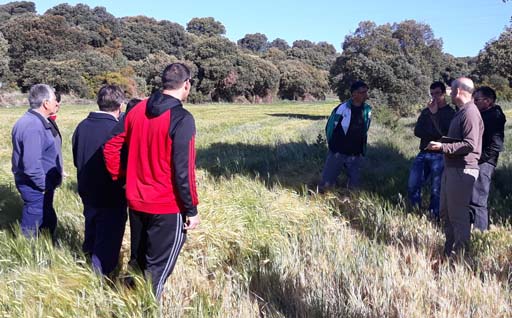
This second session looks at agricultural advisory services and how innovation plays a part in them. Watch the following video for a quick overview of this before moving on to the next section.
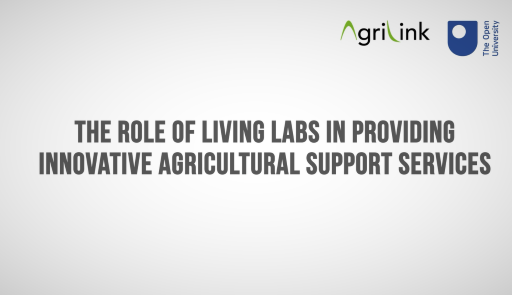
Transcript
JORIEKE POTTERS:
This session reviews the roles and relationships between innovation practices and knowledge exchange as seen by the different actors in what are called agricultural knowledge and innovation systems. And it reviews how these roles and relationships can be accommodated within a Living Lab. Farmers and their advisors are subject to a complex set of pressures and influences.
There are the policy objectives to both achieve more efficient food production and be environmentally sustainable. Then there are the developments in both knowledge and innovative technologies arising from publicly funded and commercial research. There are the public opinions about both agricultural policies and practices reported in media.
And finally, there are the opinions and interests of the farmers and advisors themselves. To respond to all these influences, it is necessary to understand the different perspectives of these actors.
Now go to the next section.
Agricultural Knowledge and Innovation Systems (AKIS)
In this session I want to explore how agricultural advisory services are currently thought about and to better understand the potential role of Living Labs. We will start by looking at the concept of Agricultural Knowledge and Innovation Systems.
 Reflective Activity 4
Reflective Activity 4
What do you understand by the term Agricultural Knowledge and Innovation Systems? Write down what you see as the key features in the text box below.
Answer
Your answer will depend very much on your degree of involvement in agriculture and agricultural advisory services. It may not be as detailed as the answer provided below by Lee-Ann Sutherland of the James Hutton Institute in the UK and Pierre Labarthe from INRA in France in AgriLink Practice Abstract 23: What is AKIS?, but as it is a term used within EU policy circles it helps to understand what it does mean.
An agricultural knowledge system (AKS) refers to the collection of agricultural information providers, the flow of information between them, and the institutions regulating these relations. It traditionally referred to farmers, support systems, educators, researchers and advisors, but has been broadened to include other actors (e.g. input suppliers, retailers). The term has also evolved from ‘Agricultural Knowledge and Information System’ to ‘Agricultural Knowledge and Innovation System’ (both acronyms are AKIS), to emphasise the importance of innovation. Both are frameworks for identifying the different actors and their roles in innovation and knowledge exchange within the agricultural sector, rather than theories or approaches.
Academics who use the term AKIS typically integrate it with another theory (e.g. relating to governance or systems) when undertaking empirical research, to increase its explanatory power. The concept of AKIS was developed by academics specifically interested in agricultural knowledge and communication. They aimed to promote the idea that innovation processes are social: farmers, advisors and researchers exchange and produce knowledge in conjunction with a number of sources.
The practical implication is that to stimulate innovation towards sustainable agriculture it is not sufficient to target farmers alone. Farmers are influenced by a diversity of actors and using the AKIS concept can help to better understand the reciprocal influences. The concept can thus be used in a reflexive way by thinking about the critical relations or networks for supporting innovation in various contexts.
More information on this topic can be found in this AgriLink Theory Primer on Agricultural Knowledge and Innovation/Information Systems.
You may still be unsure whether the I in AKIS stands for information or innovation. The two approaches to AKIS (information and innovation) can be considered competing (Dockès et al., 2011) or complementary (Klerkx et al., 2012). The Standing Committee on Agricultural Research Strategic Working Group on Agriculture Knowledge and Innovation Systems has used the definition in Dockès et al. (2011), original source Leeuwis and Ban (2004):
‘a network of organizations, enterprises, and individuals focused on bringing new products, new processes, and new forms of organization into economic use, together with the institutions and policies that affect the way different agents interact, share, access, exchange and use knowledge.’
In AgriLink, we have used a simpler definition:
‘the collection of agricultural information providers, the flows of information between them, and the institutions regulating these relations’.
In reality, innovation is the more current version, but information, or how information influences behaviour, is still an important component of an AKIS. And that exchange of information can come from a wide range of actors, processes and policies influencing agricultural innovation.
Agricultural policy across much of Europe is determined by the European Union. It is not necessary to understand this European policy context to follow how we thought about and how we ran our Living Labs, but you might be interested to know more if you do not know much about it. There is lots of detail to be found on farms, farming and innovation on the European Commission website but in particular you might want to read the page on sustainable agriculture and the CAP (Common Agricultural Policy).
 Reflective Activity 5
Reflective Activity 5
Can you name as many actors as possible in the text box below who you think might be involved in an Agricultural Knowledge and Innovation System that you are familiar with?
Answer
I cannot be sure who you have listed as there can be many actors with many different roles in an AKIS, but the most relevant actors as determined by the Standing Committee on Agricultural Research are pictured in Figure 2.1a. Of course, the range and balance of actors varies with location and context and does not have to be represented in the form shown in Figure 2.1a – two country examples are shown in Figure 2.1b produced by the PRO AKIS project.
You may have listed your actors in order of importance or degree of influence or closeness to farmers. Of course, other farmers can be important to any particular farmer, although the figure does not make this explicit, nor the role of family or farm workers.
However, thinking about actors in an AKIS is relevant to thinking about the stakeholders to be involved in a Living Lab, as you will see in later sessions.
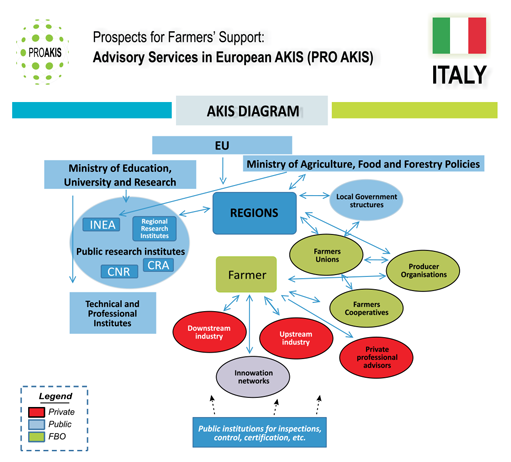
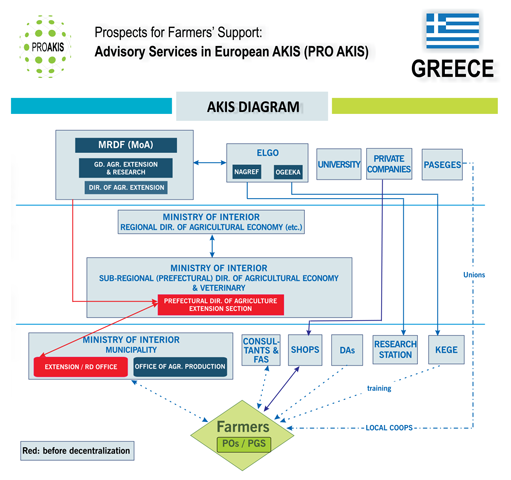
Sustainable Innovation Support services
The overall aim of AgriLink was to stimulate transitions towards more sustainable European agriculture through better understanding the roles played by a wide range of advisory organisations in farmer decision-making, and by enhancing their contribution to learning and innovation. We think it is helpful to delve a little into the research in this area to better understand this context and how it impacts on the work of the Living Labs.
The sustainable development of agriculture is a longstanding European Commission policy principle (see Council Regulation (EC) No 1257/1999, Marsden, 2003). Farmers are faced with contradictory challenges, such as reducing emissions and input use, increasing animal welfare, producing environmental goods, enhancing social cohesion in rural areas, as well as securing their traditional roles in food and fibre production, and securing income in a period characterised by prices volatility and economic uncertainties.
The notion of sustainable agriculture particularly gained prominence through the Brundtland Report (World Commission on Environment and Development, 1987), ‘Our Common Future’, where sustainable development was defined as ‘development that meets the needs of the present without compromising the ability of future generations to meet their own needs’. It is widely agreed in academic and policy communities that increasing the sustainability of agricultural systems is a necessary and important objective.
However, the definition of sustainable agriculture is complex and contested (Robinson, 2008; Velten, 2015) and is complicated by the recognition that actions or technologies can contribute to sustainability in some contexts but not others. It is also complicated by how people view technology. Many might just see this as mechanical, electronic, chemical or other physical artefacts, but in AgriLink we took a wider perspective of technology as methods, systems and devices, which are the result of scientific knowledge being used for practical purposes.
Some of these distinctions are discussed further in a Practice Abstract by Boelie Elzen of Wageningen Research as reproduced in Box 2.1 on sustainable development in agriculture.
Box 2.1 Sustainable development in agriculture
AgriLink Practice Abstract 17: Sustainable development in agriculture
| As a state of affairs: a specific agricultural technology or practice can be more or less sustainable. |
| As a process of ‘sustainable development’: developing more sustainable agricultural technologies and practices. |
Both are important, the first to assess where new development is needed and the second to take action to change unsustainable practices.
Three different dimensions (or pillars) of sustainability are distinguished, the triple P model: people (social sustainability), planet (environmental sustainability) and profit (economic sustainability). Sustainable development aims to balance the three pillars such that all can be maintained simultaneously in the long term. The practical implication is that it is not very productive to state where something is sustainable or not.
For a concrete case, one needs to identify the specific sustainability issues that are at stake for each of the three Ps and assess which of these is most problematic (i.e. least sustainable). Sustainable development should then develop new solutions for that dimension, without making things worse in the other dimensions.
However, with a poor performance in one of the dimensions (e.g. large emissions of greenhouse gases), a slight decrease in one of the other dimensions (e.g. slight loss of income) may be considered acceptable if the poorly performing dimension is considerably improved.
Hence, most of all, sustainable development is a balancing act towards achieving ‘integral sustainability’, i.e. sustainability on all relevant dimensions.
More information on this topic can be found in this AgriLink Theory Primer on Sustainable Development.
The notion of balancing or re-balancing between these three dimensions is often represented visually as in Figure 2.2. Focusing effort on just two dimensions produces some benefits (which I don’t talk about any further), but sustainability requires attention to all three dimensions.
Transitions towards sustainable development thus imply the need to support innovations that integrate different dimensions. This situation is associated with the increasing complexity and uncertainty associated with innovations. As a result, there is a need to combine different types and sources of knowledge in agriculture: disciplinary and interdisciplinary academic knowledge, evidence from experiments (applied research), farmers’ local and lay knowledge, and knowledge carried by emerging stakeholder in agricultural debates (consumers’ groups, environmental associations, etc.), but also by actors developing technologies outside agriculture (e.g. ICT companies supporting the development of data-driven agriculture).
Agricultural advisory services across Europe are also changing: widespread privatisation of advisory services (Labarthe 2009, Sutherland et al., 2013), fragmentation (Garforth et al., 2003), new businesses entering the sector (ranging from local consultancies to transnational companies), and reduced access to advice in situations where service provision is less commercially viable (Labarthe and Laurent, 2013). As a result, current AKIS are characterised by a plethora of service provision models and of new forms of partnerships (public-private, etc.). This has led to several new challenges facing agricultural advisory services in terms of how innovation is fostered and managed in order to meet the goal of sustainability.
To tackle these challenges adequately, new approaches to advisory service provision are needed, in order to connect research and farmer-based interactive innovations with advisory services and to boost innovation co-creation. The setting up of six Living Labs in AgriLink was done specifically to develop and test new advisory methods and tools to better link research and practice, and to both provide insights in the collective learning involved and to evaluate the Living Lab approach as an innovation process.
We will look at these six Living labs in more detail in Session 3. For now, I want to look at the relationships between three key aspects of innovation support services in agriculture: innovations, practices, and knowledge generation and exchange.
Innovations
Firstly, while we looked at some general definitions of innovation in Session 1, innovations within agriculture have long been dominated by a discourse based upon a transfer of technology model whereby a new technological product or process is developed and tested through commercial or publicly funded R&D and then ‘released to the market’ (Rogers, 2002). Both the product/process and accompanying information, advice and guidance are then disseminated through varying channels, often with an assumption that there will be field advisors acting as agents of knowledge exchange.
In recent years a broader view of technology and knowledge exchange has been taken. Knowledge exchange is discussed in detail below but a key feature is that the knowledge exchange is not just one way from (scientific) innovators to (farmer) users via (advisor) intermediaries. Neither is it two-way between these sets of actors. Rather, it is participatory, reflective and multi-lateral, with knowledge about products and processes created through action research or systems of practice (see below) that does not stop once an innovation has been ‘adopted’. Such participatory processes attempt to address the differing power relationships between actors in social settings and use the participants as key partners in the research, development, implementation and evaluation cycle for innovations (Lane and Flagg, 2010).
Another important feature is the nature and source of innovations. While the literature across a wide set of domains may talk about product vs. process innovation or incremental vs. radical innovation, there has also been much that has dealt with how innovations are developed and used outside of the confines of a single organisation.
Bogers and West (2012) discuss open innovation which involves firms cooperating across boundaries to create and commercialise innovations through knowledge sharing: user innovation, which is where the innovator freely shares within and beyond their community of practice, and social innovation, innovations that improve a product or process while meeting a social need in a socially responsible way (Murray et al., 2010).
Thus, innovations and the uses to which they are put by a farming community form a complex system that can be difficult to fully understand.
Practices
Secondly, practices within agriculture can be viewed through the lens of theories of practice and what may be required to affect change in such practices (Watson, 2012), or through the lens of social learning as a key basis for communities of practice, networks of practice and webs of influence (Oreszczyn et al., 2010). Theories of practice, where practices are routine behaviours arising from combinations of physical activities, mental activities, technologies and their uses, have not been good at accounting for changes over time.
This may be helped by considering ‘systems of practice’ (that is linked sets of practices aimed at similar goals repeated over time) within defined socio-technical systems (which in this case is that of supporting sustainable agriculture) that influence longer term behaviours. In this way small, but incremental, changes in practice at the micro-level (e.g. use of herbicides) can lead to large transitions in behaviour at the macro-level (e.g. shifts from spring to autumn sown crops) that impact on productivity and environmental performance, particularly where there are accompanying changes in infrastructure that support such practices.
In contrast, the concepts of communities and networks of practice (Wenger, 2000; Brown and Duguid, 2001) consider how participants learn within and as part of a community or a network under the assumption that effective learning often takes place in social settings. As reported by Oreszczyn et al. (2010), farmers can display a particular type of network of practice, characterised by a weak organisational framework but with a relatively stable network of other communities of practice (or networks of practice) they interact with, which they called a ‘web of influencers on practice’. Together, farmers’ network of practice and their web of influencers on practice represented the whole environment in which learning might occur, and so provided insights into their social learning system.
Significantly, most farmers have to work at the boundary of their network of practice and their web of influencers, which creates a significant load on their knowledge management practices as they have to find out for themselves what information is available, where, and if it is suited to their practice and context. This contrasts with other networks of practice where only some members take on this boundary, knowledge brokering role (see Box 1.1 in Session 1 on knowledge brokering).
Knowledge generation and exchange
The third factor in our list is knowledge generation and exchange between all actors, whether they are within communities or networks of practice or webs of influencers. There are growing debates not just about the differing types and nature of knowledge noted above, but also about how such types of knowledge are generated and exchanged between the actors in the farming system, including the idea of co-creation.
Indeed, knowledge exchange is but one of many terms used in agricultural extension and related sustainability fields (Faizey et al., 2012) which often influences how this area is discussed and researched.
The focus on user involvement in research has led to a categorisation of four types of knowledge in play:
| know-what: information, knowledge of facts |
| know-why: knowledge of scientific principles |
| know-how: skills or capability to do something |
| know-who: social skills to access know-how of others (Lundvall and Johnson, 1994). |
However, these are not always acknowledged or brought to the fore in many agricultural knowledge and innovation systems. Most current knowledge and innovation systems are influenced by the prevailing power of formal, scientific knowledge which has resulted from the professionalisation of knowledge creation and its use in agriculture by scientists (Levidow, 2011).
Gaining a more balanced and shared understanding of the system of interest and the connections between the actors can be facilitated using visual methods to both capture knowledge and provide a focus for discussions. We will discuss such methods in more detail in Session 4.
Summary of Session 2
This session has looked at how researchers and policy makers have framed their conceptions of agricultural knowledge and agricultural innovations in relation to all the actors involved in a system and with respect to the competing demands being placed upon farmers and others to make agriculture more sustainable.
In particular, it has noted the structural imbalances in whose knowledge is used to underpin advisory services and the improvement of existing or creation of new services and innovations. This focus on theory may feel irrelevant but it is the process by which knowledge, understanding, concepts and theories are enacted, embodied or realised that is an important part of professional development both individually and collectively.
The braiding of thinking and practice has been central to our work on Living Labs and so it is important that you understand and practise this yourself as we move on to looking at what we did.
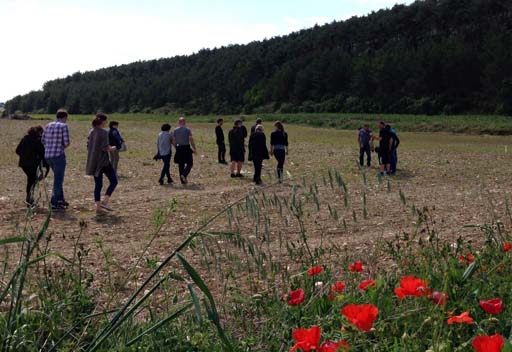
References for Session 2
Bogers, M. and West, J. (2012) ‘Managing Distributed Innovation: Strategic Utilization of Open and User Innovation’, Creativity and Innovation Management, 21 (1): 61-75.
Brown, J. S. and Duguid, P. (2001) ‘Knowledge and Organization: A Social-Practice Perspective’, Organization Science, 12 (2): 198-213.
Dockès, A-C., Tisenkopfs, T., and Bock, B. (2011) ‘Agricultural knowledge and innovation systems in transition – a reflection paper’, Standing Committee on Agricultural Research (SCAR) Collaborative Working Group AKIS. European Commission, Brussels.
EU SCAR (2012) Agricultural knowledge and innovation systems in transition – a reflection paper, Brussels. Available at: http://ec.europa.eu/research/agriculture/scar/pdf/akis_web.pdf (Accessed: 9 February 2021).
Faizey, J. et al. (2012) ‘Knowledge exchange: a review and research agenda for environmental management’, Environmental Conservation, 40 (1): 19-36.
Garforth, C., Angell, B., Archer, J., and Green, K. (2003) ‘Fragmentation or creative diversity? Options in the provision of land management advisory services’, Land Use Policy, 20: 323–333.
Klerkx, L., van Mierlo, B., and Leeuwis, C. (2012) ‘Evolution of systems approaches to agricultural innovation: concepts, analysis and interventions’, In: Darnhofer I., Gibbon D., Dedieu, B. (eds), Farming Systems Research into the 21st Century: The New Dynamic. Springer, Dordrecht.
Labarthe, P. (2009) ‘Extension services and multifunctional agriculture. Lessons learnt from the French and Dutch contexts and approaches’, Journal of Environmental Management, 90: 193-202.
Labarthe, P. and Laurent, C. (2013) ‘Privatization of agricultural extension services in the EU: Towards a lack of adequate knowledge for small-scale farms?’, Food Policy 38: 240–252.
Lane, J. and Flagg, J. (2010) ‘Translating three states of knowledge–discovery, invention, and innovation’, Implementation Science, 5(9).
Leeuwis, C., Van den Ban, A. (2004) ‘Communication for Rural Innovation’, Rethinking agricultural extension, Third Ed. Blackwell: UK. Available at: http://www.modares.ac.ir/uploads/Agr.Oth.Lib.8.pdf (Accessed: 9 February 2021).
Levidow, L. (2011) Agricultural Innovation: Sustaining What Agriculture? For What European Bio-Economy? Available at: http://crepeweb.net/ ?page_id=442 (Accessed: 9 February 2021).
Lundvall, B. and Johnson, B. (1994) ‘The Learning Economy’, Journal of Industry Studies, 1(2): 23-42.
Marsden, T. (2003) The condition of rural sustainability. Uitgeverij Van Gorcum.
Murray, R., Caulier-Grice, J., and Mulgan, G. (2010) The Open Book of Social Innovation. London: NESTA.
Oreszczyn, S., Lane, A., and Carr, S. (2010). ‘The role of networks of practice and web of influencers on farmers’ engagement with and learning about agricultural innovations’, Journal of Rural Studies, 26: 404-417.
Rogers, E. (2002) ‘The Nature of Technology Transfer’, Science Communication, 23 (3): 323-341.
Robinson, G.M. (2008) Sustainable Rural Systems: Sustainable Agriculture and Rural Communities. Ashgate, Aldershot.
Velten, S., Leventon, J., Jager, N., and Newig, J. (2015) ‘What is sustainable agriculture? A systematic review’, Sustainability, 7: 7833–7865.
World Commission on Environment and Development. (1987) Our Common Future. Available at: http://www.un-documents.net/ our-common-future.pdf (Accessed: 9 February 2021).
Watson, M. (2012) ‘How theories of practice can inform transition to a decarbonised transport system’, Journal of Transport Geography, 24: 488-496.
Wenger, E. (2000) ‘Communities of Practice and Social Learning Systems’, Organization, 7 (2): 225-246.
